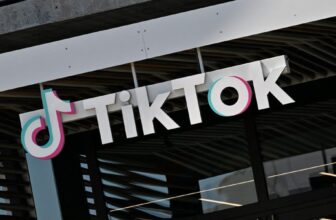
Try our newest merchandise
Keep in mind when 5G was going to alter every thing?
Again in 2019, wi-fi business leaders did not simply promise higher cell service. They promised a greater world the place docs might function on sufferers remotely, and sensible cities with driverless vehicles would make roads safer and fewer congested.
Quick ahead to right this moment, and the typical client is perhaps hard-pressed to note a lot distinction between 4G and 5G of their every day lives.
The Hype Machine
Most of the most formidable guarantees both did not require 5G or had been merely impractical. For example, distant surgical procedure calls for extra than simply high-speed web; it requires sterile environments, anesthesia, and prepared sufferers. Equally, autonomous autos must perform independently of a cell connection, elevating questions in regards to the want for 5G to start with.
Nevertheless, newer studies mentioning 5G take a distinct tack — downgrading from daring claims like ultraconvenient “sensible cities” to 5G-enabled drones that may monitor for insurance coverage fraud.
The Technical Actuality
Probably the most vital developments in 5G is using larger frequencies, which carry extra data, however do not journey as far.
So, to make use of them, you want extra antennas nearer collectively — one thing known as community densification. Constructing out the 5G community within the US has required a whole bunch of billions of {dollars} of funding.
To chop prices, a lot of the early 5G infrastructure was constructed by tweaking current 4G websites. This strategy, often called non-standalone 5G, gives effectivity however delivers a 4G-like expertise.
One other factor that was presupposed to be actually completely different about 5G was the introduction of millimeter waves, which might theoretically present a lot better capability. They’re helpful in choose areas the place crowds actually pack in like stadiums or airports.
However generally, the gap they journey is so quick and these waves are so simply blocked that widespread use in cell networks simply hasn’t made plenty of sense, and plenty of smartphones do not even assist them.
It isn’t all dangerous information. When telephones are literally linked to a 5G community, they typically get sooner speeds and decrease latency.
The factor is that for most individuals and most functions, 4G was already adequate.
Protection — not velocity — is without doubt one of the largest issues we nonetheless face.
The Protection Divide
Within the US, protection is patchy or nonexistent in lots of distant or rural areas.
Carriers merely have not constructed their networks out in plenty of these locations, actually because there aren’t sufficient paying prospects residing there to justify the funding. That is a part of what’s known as the “digital divide.”
The defining characteristic of 5G is its larger, shorter-range frequencies. If the highest precedence was increasing protection, constructing out current 4G to extra locations networks would have been extra environment friendly than upgrading a lot current 4G infrastructure in cities.
When you’ve ever seen a TV advert about 5G, you then may now be just a little confused as a result of the maps they present are likely to make it appear like 5G is already almost all over the place.
Douglas Dawson has examined cellphone speeds throughout the nation for his telecommunication consulting agency, CCG, and located that 5G solely covers 30% to 40% of the land space in most US counties.
“Individuals have hassle even making a cellphone name — 4G or 5G — as a result of towers solely have a restricted circle round them of protection,” he mentioned.
We requested the three main US carriers for touch upon the accuracy of their maps.
Solely T-Cell answered the query instantly. “Protection Maps present a basic service expectation; it is not flawless,” a spokesperson mentioned.
Customers might even see a 5G icon on their telephones even when not linked to a 5G community.
The Washington Submit reported that, within the US, the icon simply implies that a cell community is close by and never essentially that you simply’re linked to it.
We requested all main US carriers about this, too.
AT&T mentioned the 5G icon seems the place the expertise is offered. T-Cell mentioned their icon is at all times correct, and Verizon did not get again to us.
A 2024 business report confirmed that Verizon and AT&T 5G customers had been linked to a 5G community solely about one-tenth of the time.
That is even supposing the US wi-fi business has constructed almost 100,000 new cell websites since 2018.
It is no shock that carriers amplified the hype. They invested an unlimited amount of cash into it.
The Expensive Actuality
The three main US cellphone carriers spent over $100 billion on licenses to make use of the frequencies.
That does not embody the price of upgrading 4G websites to 5G or of constructing tons of latest cell websites, which has required billions extra {dollars} in funding.
Nevertheless, they’ve struggled to monetize 5G, with month-to-month cellphone payments lowering due to competitors. The typical income per person has been trending downwards whilst funding from carriers has risen, placing them in a troublesome place.
The Race
As a result of telecommunications is of large financial and social significance gear distributors — those that promote the precise infrastructure like antennas — and business commerce teams can foyer authorities officers, telling them that the following technology will probably be important and transformative — and that if they do not act rapidly, they could miss out on the advantages.
This strain contributed to the narrative that the US and different nations had been engaged in a world “5G race.”
In flip, politicians who’re almost definitely not telecoms engineering consultants however may also be desperate to implement new infrastructure tasks see this as a no-risk place. Who would not wish to align themselves with the following frontier of technological innovation?
This rush might have resulted in lots of of those issues, together with the choice to start out with non-standalone 5G networks, and the the failure of 5G to distinguish itself from 4G within the eyes of shoppers.
However 5G was additionally rushed within the planning part.
Growing a plan for a brand new technology normally takes about 10 years, however 5G was rushed out in simply eight. This was partially due to international political strain, and since Japan deliberate a splashy 5G debut for the 2020 Olympics, regardless that it ended up delayed a 12 months because of the Covid-19 pandemic.
Trying Forward: 6G and Past
It is potential that 5G will probably be a continuation of a sample established by earlier networks.
The odd generations — 1G and 3G — had been considerably disappointing, however the even generations that adopted labored out the kinks and had better advantages.
So we might see larger transformations with 6G.
However as we get nearer to the sixth technology, most consultants Enterprise Insider spoke to mentioned it is on the identical troubled path.





![[2024] MSI Aegis R2 C14NUF9-829US (Intel Core i9-14900F, 128GB DDR5 RAM, 2X 2TB NVMe SSD, NVIDIA GeForce RTX 4070 Ti Super, Windows 11) Gaming Desktop PC](https://m.media-amazon.com/images/I/81i1KVslX4L._AC_SL1500_.jpg)







